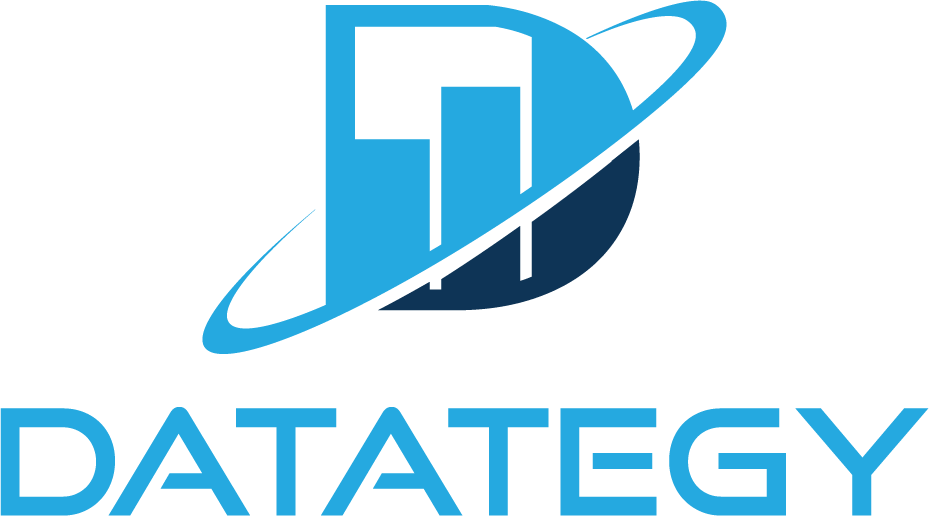We Don’t Just Build AI, We Deliver Measurable Impact Join...
Read MoreBoost Sales with AI-Powered Market Basket Analysis
Table of Contents
ToggleUnderstanding consumer purchasing behaviour is essential, not optional, in this ever-changing consumer world. Businesses now compete not only on pricing or product but also on their ability to predict and satisfy the needs of their customers. Customers of today need convenience, relevance, and personalization at every touchpoint. Businesses need to look beyond standard analytics to achieve these expectations and remain ahead of the curve.
Market Basket Analysis driven by AI can help with this. AI has become a game changer and the key to better understanding and serving your customers than ever before by identifying hidden patterns in their purchases, forecasting purchase combinations, and producing actionable insights in real time.
According to a report by McKinsey, product recommendations, largely influenced by market basket analysis, account for 35% of consumer purchases on Amazon.
Find out how papAI can improve the deployment of AI projects in Sales Teams.
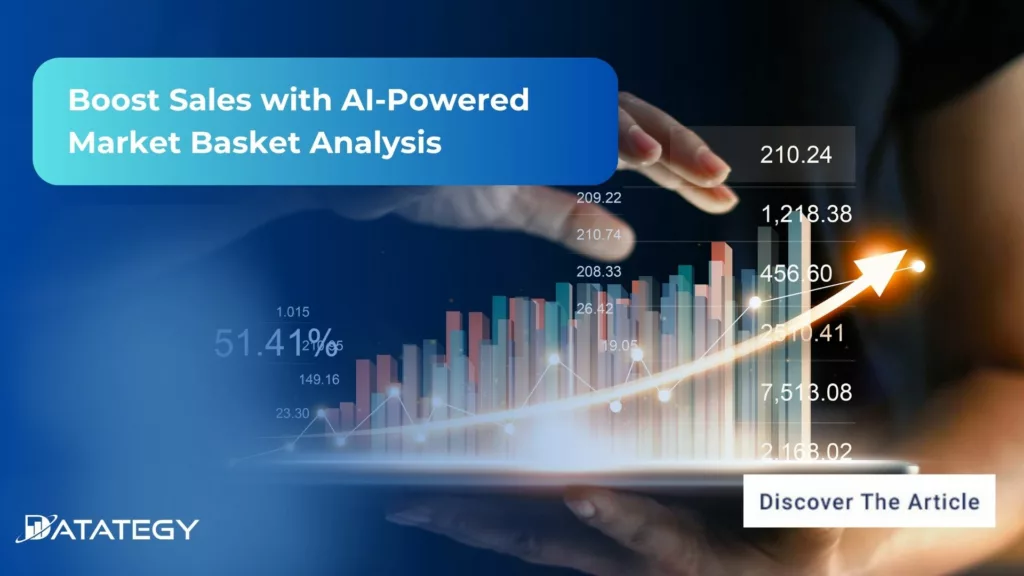
This article will define market basket analysis and explore the role of AI in its application.
What does Market Basket Analysis Mean?
At its core, it answers a simple yet powerful question: “If a customer buys product A, how likely are they to also buy product B?”
Market Basket Analysis (MBA) is a data mining technique used to understand the purchasing behavior of customers by identifying patterns and relationships among items bought together.
Product placement, cross-selling, and promotional bundling are just a few of the tactics that have historically been supported by MBA in retail settings. For instance, a store may put peanut butter and jelly next to each other on the shelf or offer a discount on one when the other is bought if customers frequently buy them together. By promoting more strategic purchases, these insights help firms increase revenue, optimise inventories, and enhance the customer experience.
These days, market basket analysis is used in far more contexts than just grocery stores. Any industry where consumer behaviour can be monitored and examined uses it, including e-commerce, telecom, financial services, and even healthcare.
Real-time insights and tailored recommendations based on dynamic purchasing patterns are made possible by the growing capability of artificial intelligence (AI). Static product pairings are no longer the only strategy; you now need to learn, adjust, and anticipate what your customers might desire next.
Why Sales Teams Should Use Market Basket Analysis?
1- Discover More Detailed Customer Insights and Intent
Knowing the reasons behind a customer’s purchases is similar to having the keys to their decision-making process. Sales teams can find valuable purchasing trends by sifting through basic transaction data with the aid of Market Basket Analysis (MBA).
Realizing that when individuals purchase oat milk, they are more likely to be interested in gluten-free granola or organic fruit as well is more important than simply knowing that someone purchased milk and cereal. Sales teams can begin customising their pitch and suggestions with far greater accuracy thanks to this information. Representatives can address a buyer’s expressed requirements and preferences directly rather than using general language.
2- Enhance Sales Forecasting and Pipeline Accuracy
Improving forecasting is one of the hidden advantages of an MBA for sales teams. Sales teams may more accurately predict demand trends and make appropriate plans by knowing which goods are most commonly purchased together, as well as how that behaviour changes over time.
For example, sales managers can modify pipeline predictions and inventory expectations to correspond with an increasing link between specific items in a given region, as revealed by MBA. Better resource allocation within the company, more dependable supply chain alignment, and more precise sales targets are the results of this. Practically speaking, representatives may better target campaigns, plan for seasonal upticks, and coordinate marketing initiatives around statistically validated product bundles.
3- Using Personalization to Increase Customer Retention
Gaining a customer isn’t enough in today’s competitive marketplaces; long-term growth occurs when you retain them. By assisting sales teams in crafting more relevant and individualised customer experiences, MBAs play a crucial part in retention. Customers are more likely to remain interested and devoted when you continuously provide them with products that suit their particular demands and behaviour.
Sales representatives can leverage MBA insights to follow up with appropriate offers that feel curated rather than automated, timely check-ins, and well-considered recommendations. This degree of customization demonstrates to clients that they are cherished and understood rather than merely another line in a CRM. Additionally, it facilitates improved relationships after the sale, which many teams fail to consider. By providing complementary goods or services that keep adding value beyond the initial sale, MBA assists representatives in reestablishing contact.
What are the Key Components of AI in Market Basket Analysis?
1- Machine Learning Algorithms
Machine learning is the foundation of any market basket analysis driven by AI. To identify and forecast which items are frequently purchased together, these algorithms are trained on enormous volumes of transaction data. Machine learning changes over time, learning from new inputs and modifying its predictions in contrast to static rule-based systems.
For instance, common itemsets are typically mined using association rule learning approaches like Apriori or FP-Growth. However, AI goes one step further by introducing models that can adjust to variations in consumer behaviour, seasonality, and even regional preferences. This makes recommendations more timely and accurate. With the use of an AI-enhanced MBA tool, a sales staff may look beyond what sold successfully the previous month and learn about current trends and what will probably be in demand in the future.
2- Natural Language Processing (NLP)
AI makes it possible to combine organized transactional data, which is the traditional focus of an MBA, with unstructured sources, such as product descriptions, customer evaluations, and social media buzz. Natural Language Processing (NLP) makes this possible. Product interactions can be enhanced with emotional context thanks to natural language processing (NLP), which enables systems to comprehend and extract meaning from human discourse.
Consider an AI system that recognises, for example, that consumers who purchase “wireless headphones” also mention “noise cancellation” and “long battery life” favourably. Cross-selling tactics can then be informed by these data, which link items based on perceived value as well as purchase frequency. In order to improve item hierarchies in extensive catalogues, NLP can also be used to automatically tag and categorise products.
3- Real-Time Analytics Infrastructure
When it comes to sales, speed is crucial. Real-time analytics are used by AI-enhanced Market Basket Analysis to deliver actionable information at the point of engagement. Modern infrastructure enables AI systems to process transaction data in real time and rapidly suggest potential product pairings, whether they are used in in-store sales terminals or online recommendation engines.
This implies that the system can instantly suggest another item based on real-time data as a customer adds one to their cart. Strong data pipelines and streaming capabilities are necessary for real-time MBA, and cloud-based platforms that can grow with demand are frequently used to meet these needs. Sales teams need to know this. It guarantees they are not depending on last week’s batch-processed insights or out-of-date reports. Rather, they have tools that represent the customer’s current situation.
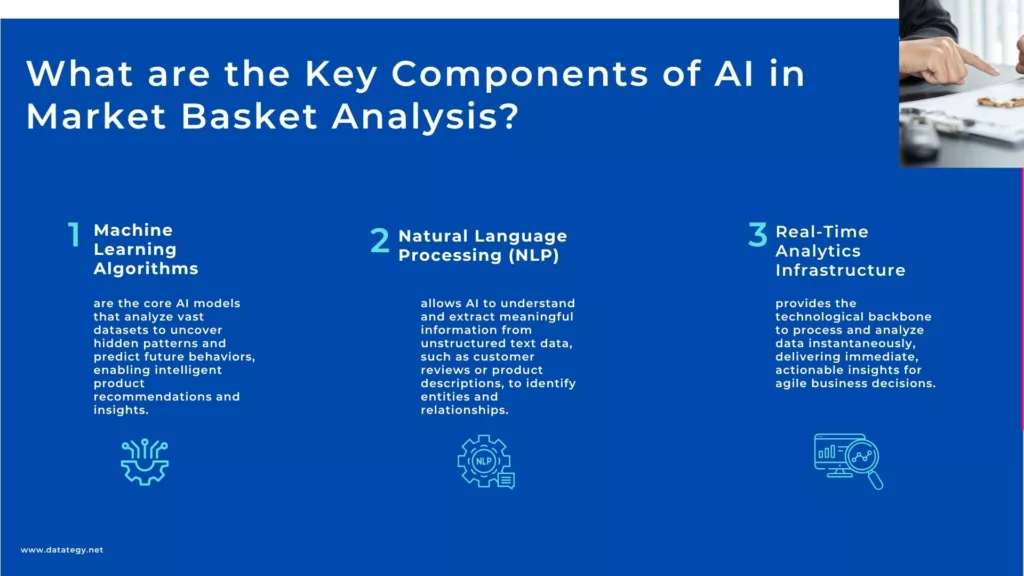
Key Components of AI in Market Basket Analysis?
What are the Key Benefits of Artificial Intelligence (AI) in Market Basket Analysis?
1- Enhanced Accuracy and Precision in Identifying Buying Patterns
Through the use of advanced machine learning models rather than conventional rule-based methods, artificial intelligence significantly increases the accuracy of market basket analysis. Traditional MBA approaches sometimes depend on static association rules and predetermined thresholds, which can overlook nuances or changing patterns in consumer behaviour.
AI systems, on the other hand, dynamically examine enormous datasets and pick up new information as it becomes available. AI may identify subtle links between products like seasonal changes, new trends, or regional preferences that could otherwise go unnoticed thanks to this ongoing learning. This means that product bundles and recommendations for sales teams and marketers are now very accurate representations of the most recent client preferences rather than relying on conjecture or out-of-date information.
For example, the accuracy for the prediction of customer baskets using KNN is 75.00%, and GBM is 67.40%. (source: AIP)
2- Real-Time, Scalable Insights for Agile Decision-Making
The ability of AI to produce insights in real time is one of its most notable advantages in market basket analysis. Sales data is frequently batch processed in traditional MBA programmes, which can produce static or delayed results that soon become out of date in fast-paced retail settings. Real-time analytics, streaming data, and cloud computing are all used by AI-powered systems to provide immediate, useful insights.
This implies that sales teams are able to respond quickly to shifting consumer habits, seasonal patterns, or the effects of promotions. For instance, a sales staff can swiftly modify their pitch or marketing campaign to take advantage of a sudden spike in demand for a product package. AI systems may also easily develop with increasing data volumes, processing millions of transactions without sacrificing quality or speed.
3- Creating Customer-Centric Experiences
Market Basket Analysis can now provide individualised recommendations on a never-before-seen scale thanks to AI. Through the integration of customer data from many sources, including demographics, browsing habits, purchase history, and even sentiment analysis, artificial intelligence (AI) generates comprehensive profiles that assist in forecasting each shopper’s likely future purchase.
By customising offers and packages to particular client needs, interests, and settings, this personalisation goes far beyond simple product pairings. This increases the possibility of engagement and repeat business by enabling sales teams to approach every customer interaction with insights that feel really relevant and meaningful. Stronger emotional ties with clients are also fostered via personalised experiences, which raise lifetime value and brand loyalty. With the help of AI-driven personalisation, Market Basket Analysis is transformed from a transactional tool to a strategic tool that attracts more loyal, long-term clients.
71 percent of consumers expect companies to deliver personalized interactions. And seventy-six percent get frustrated when this doesn’t happen. (Source: McKinsey).
4- Improved Operational Efficiency and Cost Reduction
AI-powered Market Basket Analysis greatly improves operational efficiency in addition to increasing sales and customer satisfaction. Businesses can avoid waste, prevent stockouts, and optimise inventory levels by precisely forecasting demand for product combinations. Better resource allocation and supply chain management result from this.
Sales teams will save time managing manual product recommendations or campaigns and lose fewer opportunities as a result of out-of-stock items. Furthermore, automating the research and recommendation process frees up sales and marketing personnel to concentrate on strategic tasks by reducing the need for manual data crunching and guesswork. Significant cost reductions and efficiency improvements may ensue, particularly for companies with extensive, intricate product catalogues or high transaction volumes.
Retailers usually observe a 3-5% increase in average transaction value when they apply data-driven product associations found through market basket analysis. (Source: Kanerika)
How to implement AI Solutions for Market Basket Analysis within your Organizations
1- Select the Best AI Tools
First of all , you have to select the finest AI tools and technologies to suit your particular requirements. Depending on your objectives, you may need to leverage technologies like computer vision, machine learning, or predictive analytics. For instance, computer vision is particularly useful for visual inspections and defect identification, while machine learning models may be used to forecast problems or optimize operations.
Predictive analytics tools are helpful in anticipating maintenance needs. You must choose technologies that work with your existing systems and infrastructure to guarantee smooth integration and scalability for future needs.
2- Data Collection and Configuration of the Infrastructure
Gathering relevant data is crucial for training your AI models, as data is the foundation of any AI application. This includes sensor data, production data from the past, and any other inputs pertaining to manufacturing. Since AI models rely on high-quality data to function properly, accurate, clear, and organised data are crucial.
Set up the necessary infrastructure. Ensure it connects with your current ERP or MES systems. This will help with data collection and storage. You may need to install IoT sensors on manufacturing lines for real-time monitoring. These sensors gather data on vibration, temperature, and pressure. This information aids in analysis and boosts efficiency.
3- Choose the Right AI Model
Once the data has been collected and analyzed, the next step is to train AI models tailored to your quality control processes. This means putting the data into machine learning techniques or deep learning models for computer vision applications.
For example, machine learning models can learn to find defects using past data. However, computer vision systems need many labeled photos to spot product issues. Customization is important to make sure the AI models fit your production environment and product details. Testing, validation, and iteration are key to making sure the models work well in real-life situations.
4- Pilot Testing and Validation
Before using AI systems in your entire production line, run a pilot test. This test will help you check the system’s performance in a controlled setting. Focus the pilot on a small part of your manufacturing process. This will help you validate the AI models and see how they affect quality control.
During this phase, monitor the AI system’s ability to spot errors, optimize workflows, and predict maintenance needs. Consult with operators and quality control teams to identify any issues or possible areas for improvement. Make the necessary adjustments to the AI models or system integration before scaling the solution.
Real-World Use Cases of Companies Using AI in Market Basket Analysis
1- Amazon: Personalized Product Recommendations & Cross-Selling
Amazon put AI-powered personalisation at the heart of their revolution in e-commerce. Their technology processes enormous volumes of consumer data by utilising advanced machine learning methods, such as deep learning, content-based filtering, and collaborative filtering.
Browse history, search terms, previous purchases, product ratings, and even the cumulative actions of millions of comparable customers are all included in this data. By examining these various data points, Amazon’s AI is able to detect intricate, subtle connections between products that go far beyond simple co-occurrence. For example, it can determine that buyers of a particular phone model are very likely to also purchase a particular brand of screen protector or a case with a distinctive design.
Amazon’s dynamic, real-time recommendation engine is powered by this complex analysis. The AI constantly changes recommendations as a user browses the website or adds products to their cart, offering incredibly relevant product combinations. This AI-driven market basket research is directly manifested in features like “Frequently bought together,” “Customers who bought this also bought,” and customized homepage carousels.(Source: Shaped.AI)
2- Walmart: Optimizing Product Placement and Inventory
To close the gap between online insights and in-store execution, Walmart, a retail behemoth with a substantial physical presence, uses artificial intelligence (AI) in market basket analysis. In order to create a thorough understanding of consumer purchasing habits, their approach combines omnichannel data that is, internet browsing and purchase trends with transaction records from physical stores. Walmart is therefore able to go beyond simple co-occurrence and comprehend deeper consumer journeys by feeding this comprehensive data into AI systems that recognise common item pairings and transaction sequences.
These AI-powered insights are essential for improving inventory control and physical shop layouts. For example, Walmart can strategically arrange products closer together in physical aisles if the analysis shows a high correlation between, say, peanut butter and bananas (a well-known example) or unexpected pairings, like beer and diapers during particular events, like hurricanes. In-store sales are immediately impacted by this clever grouping, which improves product discoverability and promotes impulsive purchases.
Additionally, Walmart’s predictive analytics models use the insights from AI-powered market basket analysis to forecast demand for complementary items more accurately.(Source: walmartdataventures).
3- Starbucks: Personalized Marketing and Offers via Deep Brew AI
Starbucks transforms customer interaction with highly personalised marketing and offers by utilising its advanced “Deep Brew” AI platform. This in-house artificial intelligence system carefully examines a wide range of consumer information, such as previous purchases, preferences, time of day, geographical location, and even outside factors like local weather, in addition to the customer’s membership in a loyalty programme. By delving deeply into the behaviour of each individual client, Deep Brew is able to comprehend complex linkages and patterns of consumption, going beyond basic promotions.
The impact of this AI-driven personalization strategy is substantial, directly translating into financial gains and heightened customer interaction. Internal reports cited an “upsurge of 30% in their ROI, and produced a 15% growth in customer engagement levels, compared to their previous marketing methods.(Source: TheAIreport)
Before using Artificial Intelligence, what obstacles must we overcome?
Businesses must overcome a number of significant challenges prior to using artificial intelligence in order to guarantee its effective deployment. The amount and quality of accessible data is a significant barrier. Large datasets are essential for AI learning and accurate prediction, but many organizations struggle with data that is inconsistent, fragmented, or scattered across several systems. To get around this, companies need to make investments in data integration, cleansing, and appropriate data governance to guarantee that they can supply AI systems with accurate, high-quality data.
How to choose the best AI solution for your data project?
In this white paper, we provide an overview of AI solutions on the market. We give you concrete guidelines to choose the solution that reinforces the collaboration between your teams.
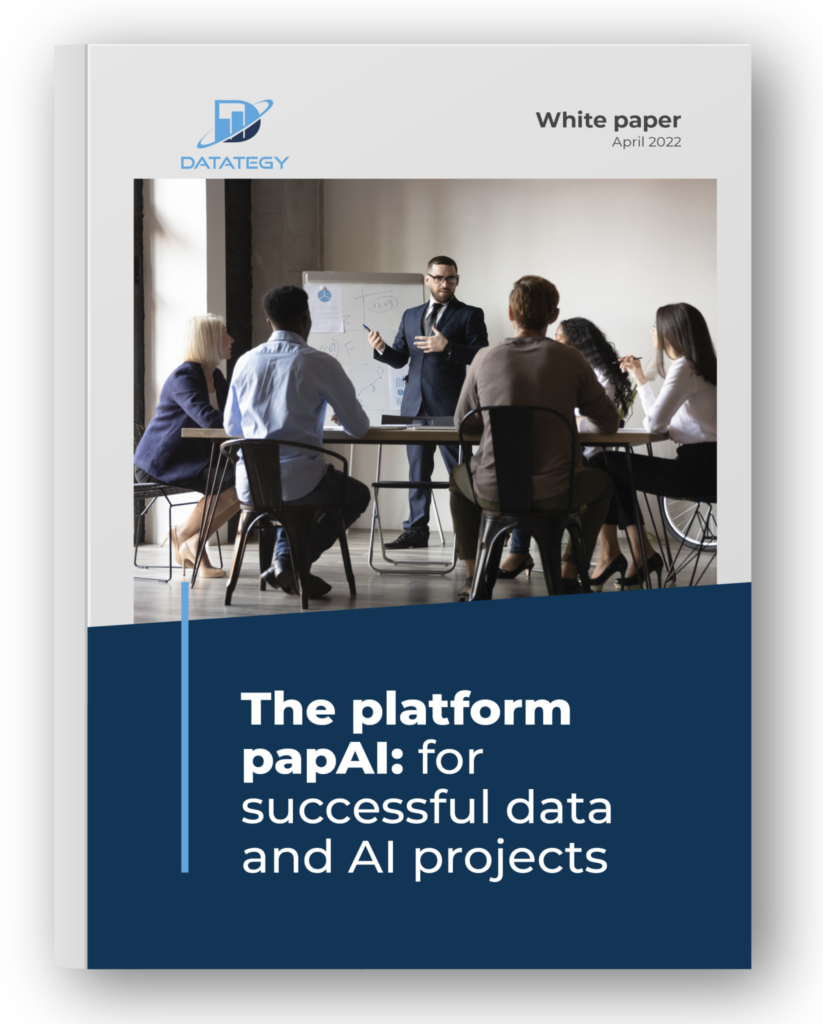
How papAI helps build effective AI-powered Market Basket Analysis (MBA)?
papAI is a comprehensive artificial intelligence solution made to optimize and simplify processes in a variety of sectors. It offers strong data analysis, predictive insights, and process automation capabilities by fusing state-of-the-art machine learning and artificial intelligence technology.
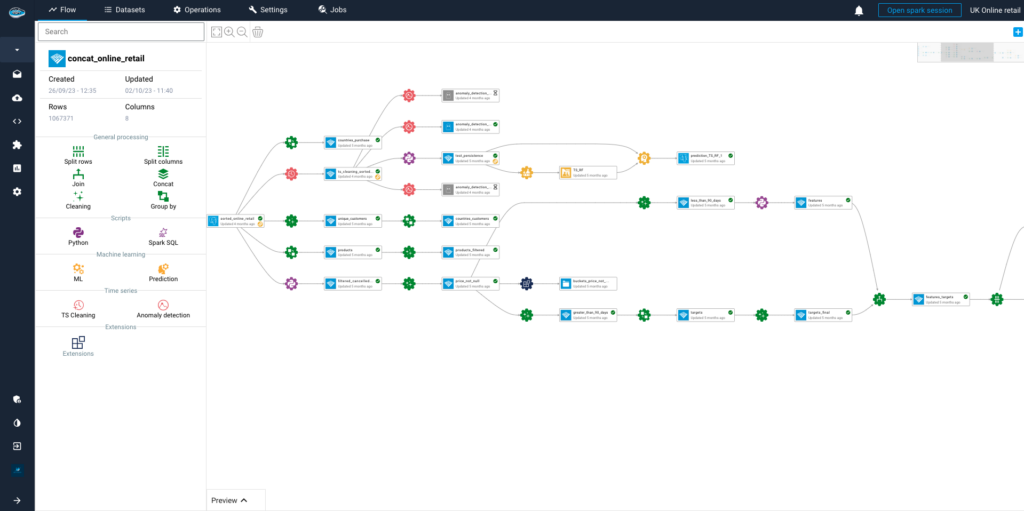
Here’s an in-depth look at the key features and advantages of this innovative solution:
Unified Data Integration and Preparation for Deeper Insights
papAI simplifies one of the most complex stages of Market Basket Analysis: integrating and preparing data from multiple sources. Companies often struggle with siloed data on purchase history, customer profiles, POS systems, and digital behavior, making it hard to draw reliable connections between products. papAI allows data scientists and business users to bring together structured and unstructured data in a clean, visual, and centralized environment.
Its low-code/no-code interface ensures that even non-technical stakeholders can participate in shaping the dataset. Once unified, papAI helps cleanse, normalize, and enrich the data automatically, detecting outliers, correcting inconsistencies, and transforming variables for better analysis.
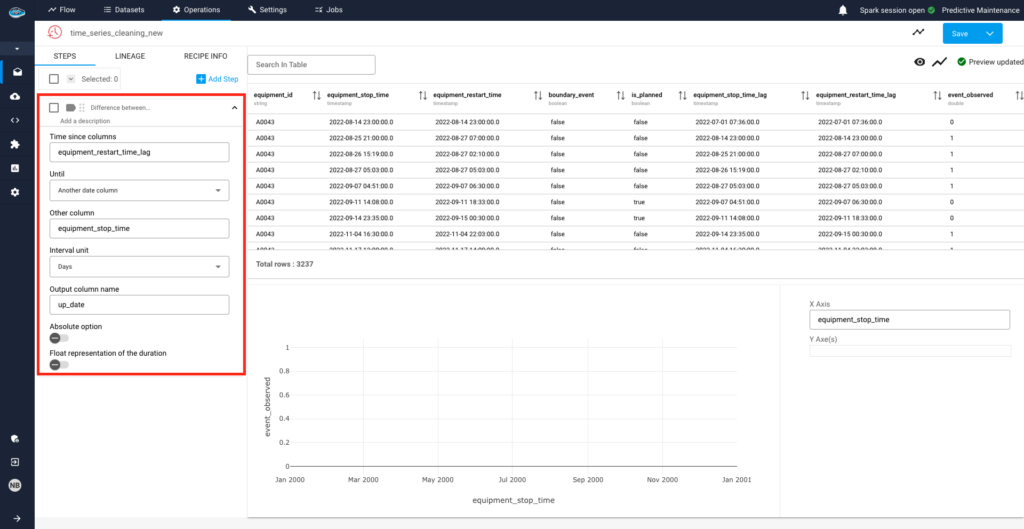
Advanced Machine Learning Algorithms for High-Precision Recommendations
What sets papAI apart is its seamless integration of cutting-edge machine learning and AI algorithms tailored to business needs. Traditional MBA typically uses simple association rules (like Apriori), but papAI supports a wide range of AI models, decision trees, clustering, deep learning, and more, enabling users to go far beyond basic product combinations. For instance, papAI allows you to detect hidden affinities between products based on latent patterns, not just the frequency of co-purchase.
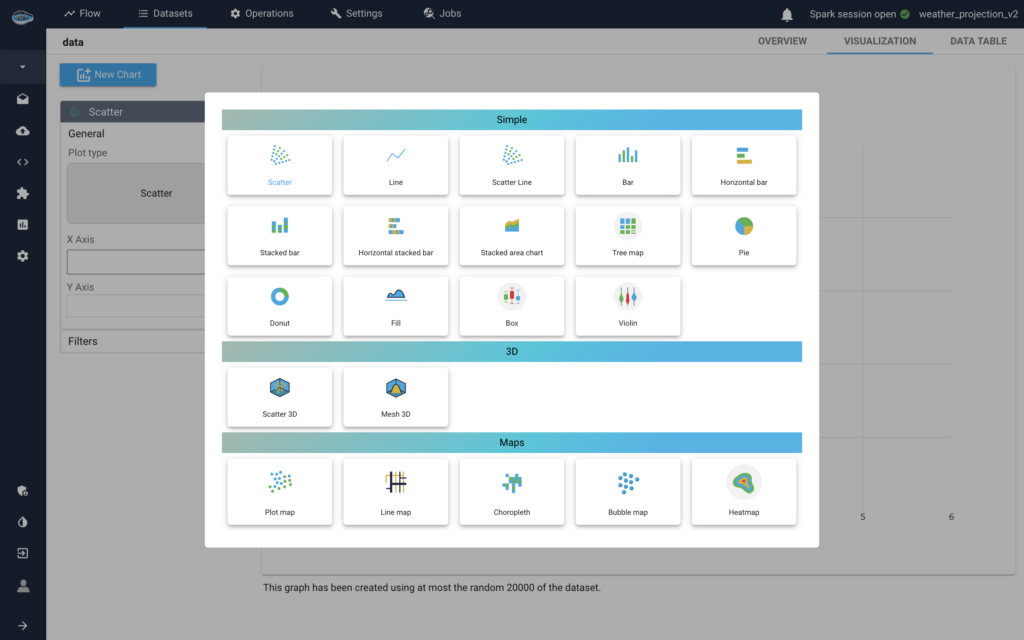
Scalable, Compliant, and Secure AI Deployment Across Teams
Building a successful AI-powered MBA solution requires more than just models it requires scalability, governance, and security. papAI is designed to deploy AI at scale, supporting everything from local pilot projects to global rollouts across multiple teams.
It provides automated model versioning, audit trails, and access controls, ensuring that the analysis adheres to internal policies and external regulations such as GDPR or CCPA. With built-in role management and project sharing capabilities, data scientists, marketing analysts, and executives can collaborate smoothly within the same workspace.
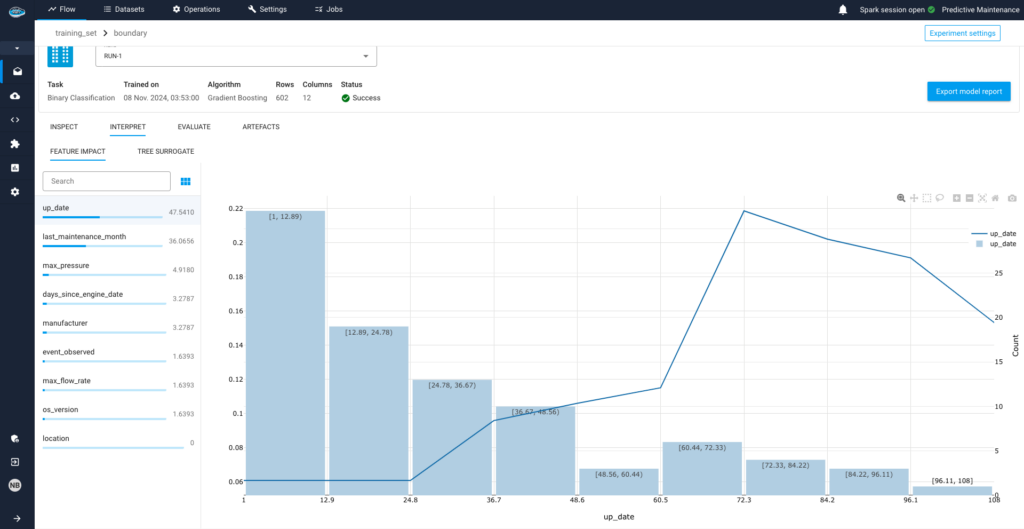
Create Your Own AI Solution for Market Basket Analysis with papAI
From intelligent data preparation to advanced modeling and real-time simulations, papAI empowers sales and marketing teams to understand what customers truly want—and when they want it. Whether you’re aiming to personalize experiences, optimize inventory, or increase cross-sell conversions, papAI is your foundation for a more agile, customer-centric business.
Ready to turn your data into revenue-driving insight? Book your free demo today and discover how papAI can help you build and scale your own AI solution for Market Basket Analysis.
Market Basket Analysis traditionally identifies products frequently bought together. AI enhances this by using sophisticated machine learning algorithms to uncover deeper, more accurate patterns from vast datasets, enabling dynamic, real-time insights and hyper-personalized recommendations that drive significant sales uplift, unlike manual or basic methods.
Successful implementation relies on three core components: powerful Machine Learning Algorithms to analyze complex buying patterns, Natural Language Processing (NLP) to extract insights from unstructured data like reviews, and a robust Real-Time Analytics Infrastructure to process data instantaneously for agile decision-making and immediate personalization.
Companies like Walmart use AI in MBA to optimize physical store layouts and inventory placement by identifying frequently co-purchased items (like peanut butter and bananas). Starbucks’ Deep Brew AI leverages it for highly personalized marketing offers, leading to a 30% ROI, while Sephora uses it for intelligent product bundling and precise beauty recommendations, resulting in increased sales and reduced returns.
Interested in discovering papAI?
Our AI expert team is at your disposal for any questions
AI’s Role in Translating Complex Defence Documentation
AI’s Role in Translating Complex Defence Documentation The defence sector...
Read MoreHow AI Transforms Technical Documentation in Medical Devices and Life Sciences
How AI Transforms Technical Documentation in Medical Devices and Life...
Read MoreDatategy and Alpha X Join Forces to Strengthen AI-Driven Governance Across EMEA
Datategy and Alpha X Join Forces to Strengthen AI-Driven Governance...
Read More
